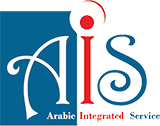AIS has managed to integrate systems of translation management, terminology management, and translation memory in a workflow environment to provide high quality, cost effective and fast translation service.
When serving our clients, we always have an eye on product release timing set by our clients. This is because timing is crucial in today’s highly competitive market. For this end, the process is streamlined by proprietary web-based knowledge and data mining solutions to ensure prompt simultaneous product release.
Phase 1
Upon receipt of a project for translation, it will be assigned to one of our qualified project managers. PM’s job is to assess the project to determine subject matter, formatting requirements and turnaround time and schedule. He initiates work by assigning the job to the most suitable resources in the particular field, subject matter and data processing format.
As the first step for localizing the project; terminology is extracted and the resulting list of terms is translated. This glossary is then imported in a terminology management tool to facilitate access to terminological resources during translation and maintenance of the database.
Translation is carried out using a translation memory tool (TRADOS, SDLX, Déjŕ vu). We strongly believe in the impact TM tools would have on localization project. Such TM tools improve translators’ productivity by automating terminology search, re-using previously translated documents, and maintaining consistency.
At the end of this phases, random samples are taken for QA checks. This ensures the detection of quality-related issues early in the translation process.
Phase 2
This phase involves two sub-phases: Revision and editing. When translation finishes, the first draft is subject to string-by-string revision/proofreading. Output material is then edited by a senior editor who is responsible for overall quality control, consistency and cross-consistency together with implementation of all style guides, check lists and translation-specific client instructions;
Phase 3
This is the phase of the QA check. At AIS we take quality very seriously. QA is an integral part of our translation cycle.
- Linguistic QA checks: Through these checks we assure that style guides are followed, preferences in terminology are implemented, and consistency is maintained.
- Technical QA checks: Through these checks we assure that client’s instructions as regards deliverables are followed, and translation maintains the visual spirit of the sources as regards text styles, fonts….etc. For some of these checks we depend on standard QA tools like HTMQA and RTFQA.
Throughout the project life cycle we keep our clients updated through status reports. Clients’ feedback receives due attention. Their comments, updates and modifications are instantly implemented.
